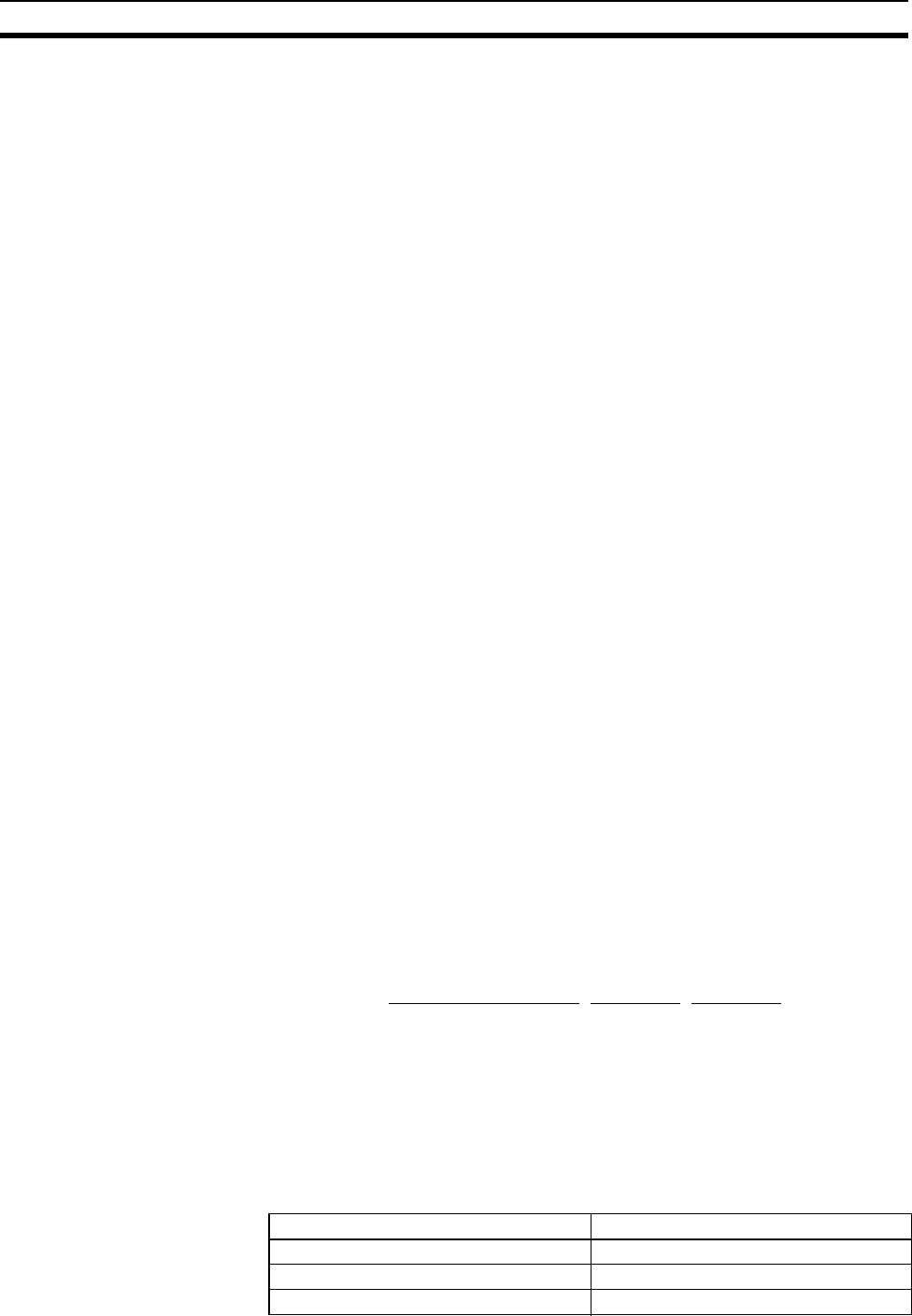
13
IP Addresses Section 1-7
nodes regardless of the networks on which they exist. To achieve this, net-
work numbers are allocated by the Network Solutions, InterNIC Registration
Services, to ensure that all Ethernet networks have unique numbers regard-
less of where they exist. The local system administrator is left the responsibil-
ity of allocating unique host numbers locally. You therefore should obtain a
network number from the InterNIC Registration Services to ensure unique-
ness and allow for future network expansions if required.
1-7-3 IP Address Settings
An IP address must be set for the Ethernet Unit before Ethernet communica-
tions can proceed. The IP address is set for each CS-series Ethernet Unit
using the rotary switch on the back of the Unit. For more details, refer to Set-
ting the Local IP Address. The IP address for each CJ-series Ethernet Unit is
set in the DM Area words allocated to CPU Bus Units or the CPU Bus Unit
System Setup using a Programming Device. For more details, refer to
4-2
CPU Bus Unit System Setup
or 4-4 DM Area Allocations.
1-7-4 Subnet Masks
Operation and management of a network may become very difficult if too
many nodes are connected on a single network or if a single organization has
to manage too many network numbers. It can therefore be convenient to
divide a single network up into several subnetworks by using part of the host
number as a subnet number. Internally the network can be treated as a num-
ber of subnetworks, but from the outside it acts as a single network and uses
only a single network number.
To establish subnetworks, the host number in the IP address is divided into a
subnet number and a host number by using a setting called the subnet mask.
The subnet mask indicates which part of the host number is to be used as the
subnet number. The user must first determine the number of bits of the host
number to be used as the subnet number and then set the subnet mask
accordingly. All bits in the subnet mask that correspond to the bits in the IP
address used either as the network number or subnet number are set to “1”
and the remaining bits, which will correspond to the bits in the IP address
actually used for the host number, are set to “0”.
The following example shows the subnet mask for an 8-bit subnet number
used in a class-B IP address. This subnet mask is structured as follows:
This would thus be a class-B IP address masked as a class-C IP address, i.e.,
externally it would be allocated a class-B IP address but internally it can be
addressed using class-C IP addresses.
Subnet mask: 11111111 11111111
11111111 00000000 (FFFFFF00)
It is only necessary to set subnet masks if subnetworks are used. If a subnet
mask is not set by the user, a default mask will be set automatically according
to the IP address class to indicate that the entire host number will be used as
the host number, i.e., no bits will be assigned for use as the subnet number.
All nodes on the network that are going to belong to the same subnetwork
must have the same subnet mask.
In this case, the following subnet mask values will be used depending on the
IP address class.
Class Network mask value
Class A 255.0.0.0
Class B 255.255.0.0.0
Class C 255.255.255.0.0.0


















